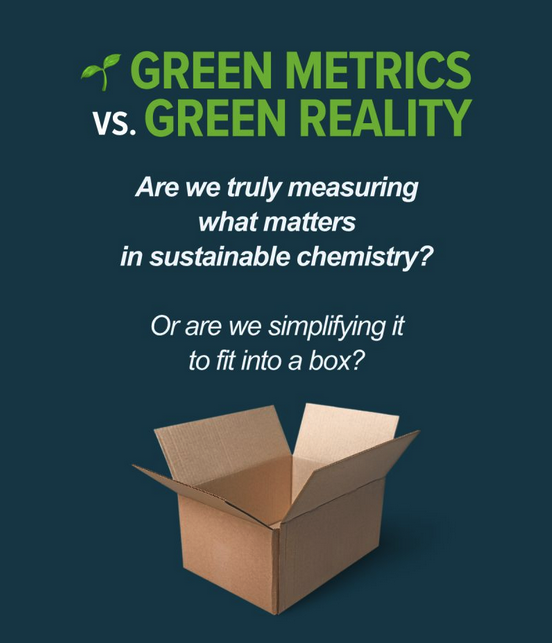Metrics like atom economy and the E-factor have become foundational tools for evaluating sustainability in chemical synthesis. But do they tell the whole story?
While these metrics provide useful insights, they often lack critical context:
🧪Reagent Availability: How accessible and sustainable are the raw materials?
⚡ Energy Source : What’s the carbon footprint of the energy required for the process?
🔬 Purification Intensity: How much energy, water, and waste is needed and generated in the purification stage?
Without considering these factors, metrics like atom economy and E-factor can create a misleading picture of sustainability leading to what we might call false positives in our quest for greener processes.
The true path to green chemistry lies in integrated assessment frameworks, which evaluate sustainability from a systems-level perspective. It’s not about relying on a single number, but about considering the entire process, from sourcing and energy use to waste generation and end-of-life treatment.
At Alza & Associates, we advocate for a more refined, holistic approach to sustainability. One that accounts for both the technical and the real-world complexities of chemical processes.
👉 Are we truly measuring what matters in sustainable chemistry? Or are we simplifying it to fit into a box?


